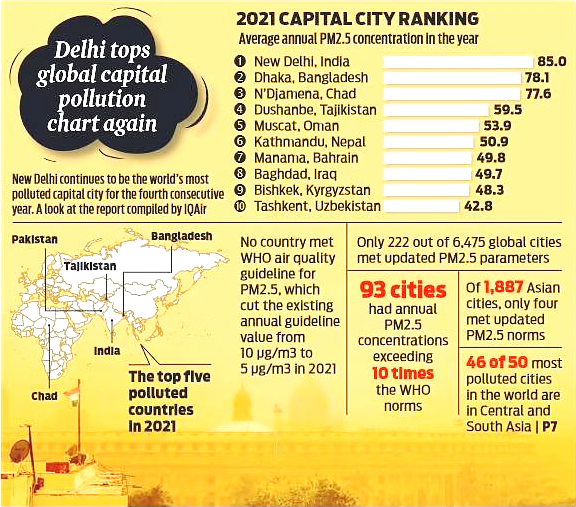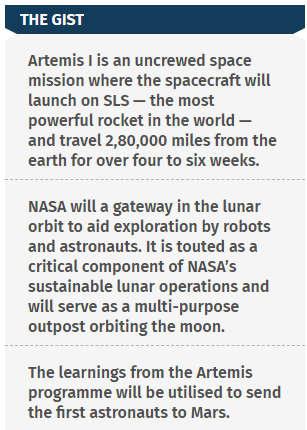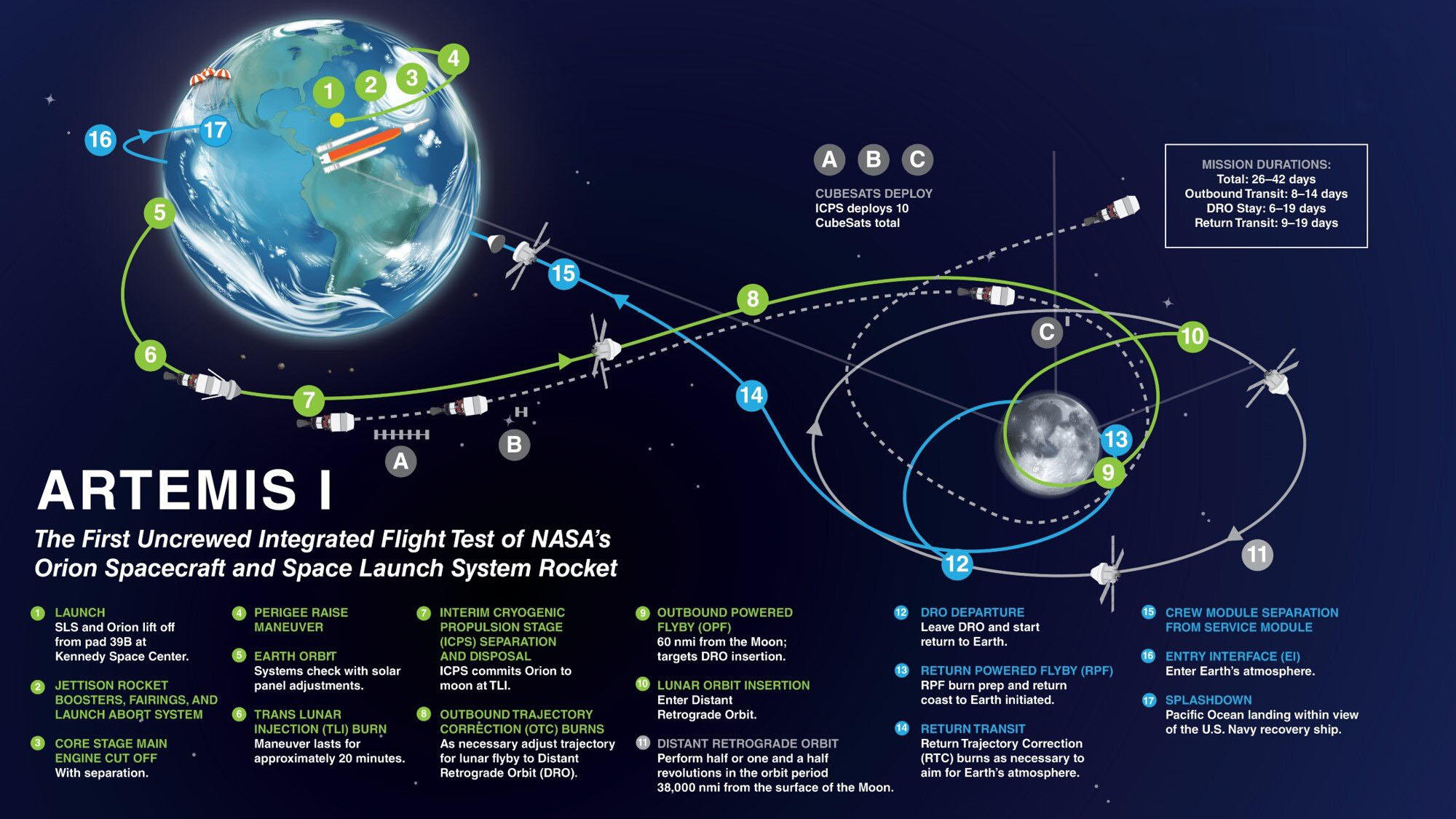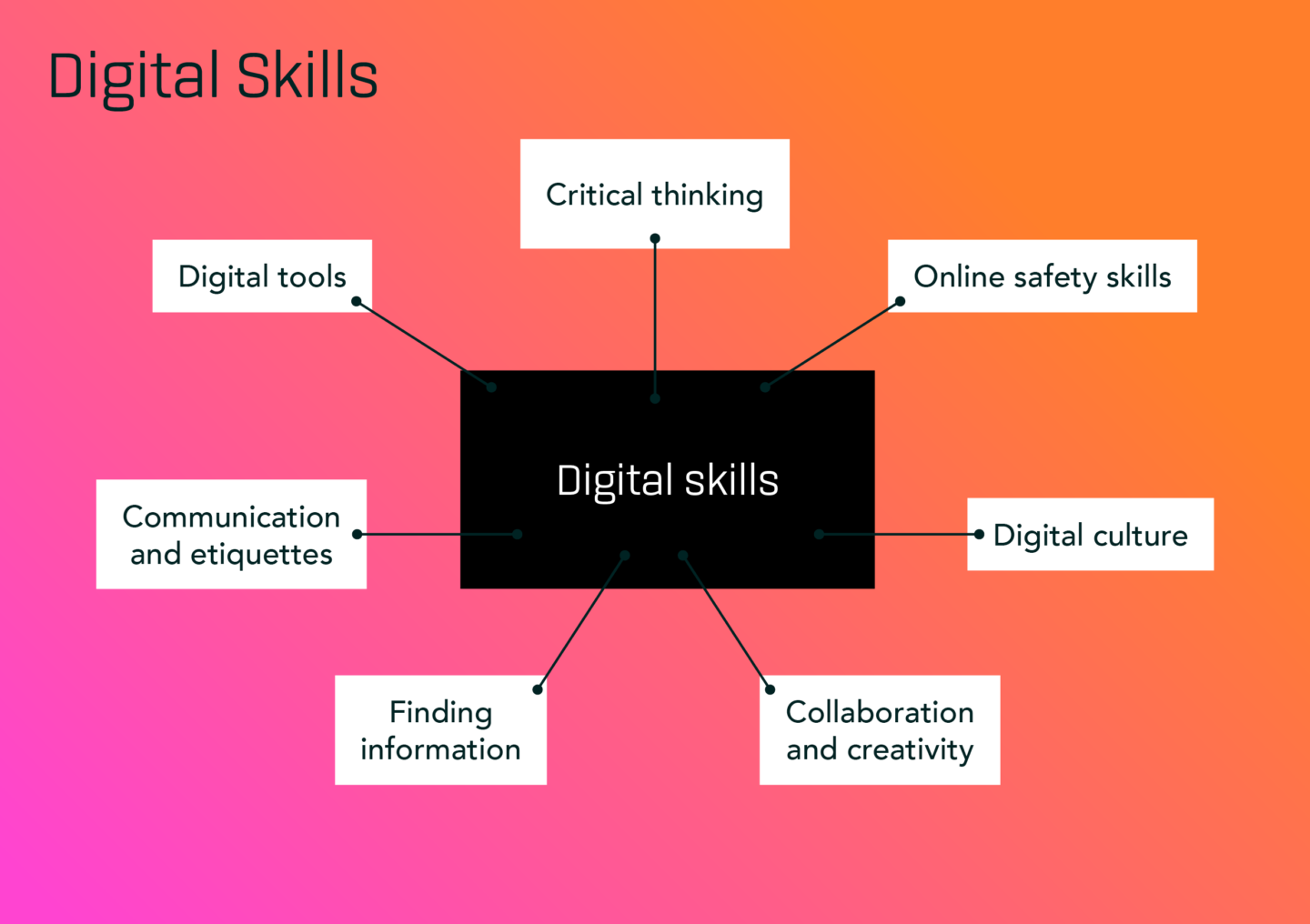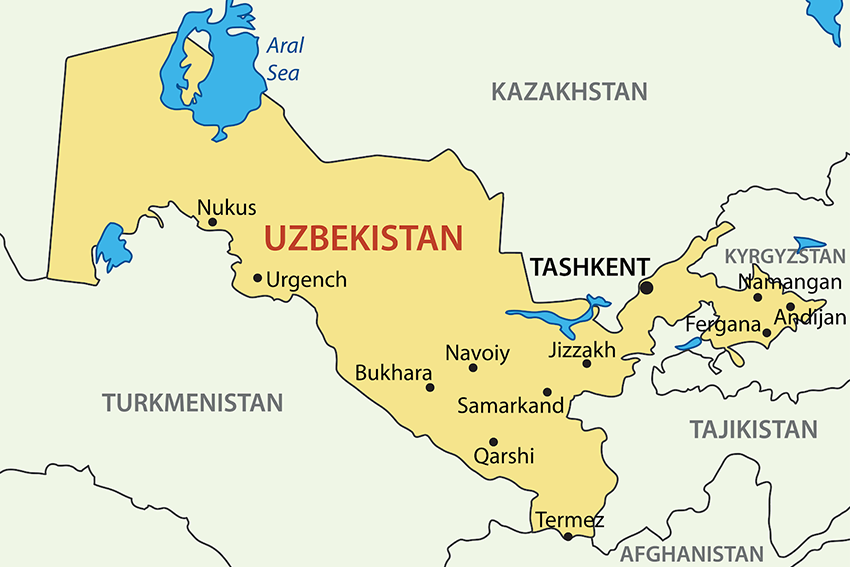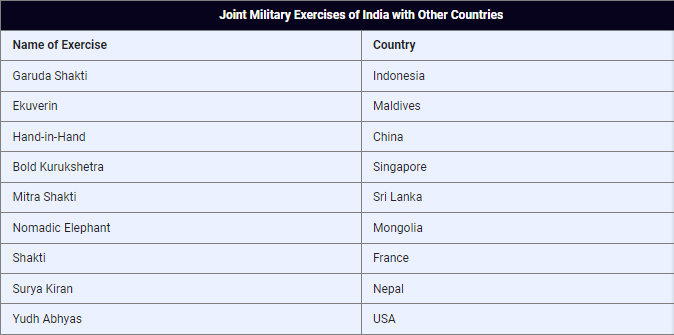Biodiversity & Environment
World Air Quality Report 2021
For Prelims: 2021 World Air Quality Report, National Clean Air Program (NCAP), BS-VI Vehicles, Push for Electric Vehicles (EVs), Odd-Even Policy, New Commission for Air Quality Management, Turbo Happy Seeder (THS) Machine.
For Mains: Effects of Air pollution, Environmental Pollution & Degradation.
Why in News?
Recently, the 2021 World Air Quality Report was released, the report presented an overview of the state of global air quality in 2021.
- IQAir, a Swiss group that measures air quality levels based on the concentration of Particulate Matter (PM) 2.5.
- IQAir endeavours to engage, educate, and inspire governments, researchers, Non-Government Organisations, companies, and citizens to work together to improve air quality and create healthier communities and cities.
What is the Need for the Report?
- Air pollution is now considered to be the world's largest environmental health threat, accounting for seven million deaths around the world every year.
- Air pollution causes and aggravates many diseases, ranging from asthma to cancer, lung illnesses and heart disease.
- The estimated daily economic cost of air pollution has been figured at USD 8 billion, or 3 to 4% of the Gross World Product (GWP)
- GWP is the combined Gross Domestic Product (GDP) of all the countries in the world equals the total global GDP.
- Air pollution affects those that are most vulnerable the most. It is estimated that in 2021, the deaths of 40,000 children under the age of five were directly linked to PM2.5 air pollution.
- Further, in this age of Covid-19, researchers have found that exposure to PM2.5 increases both the risk of contracting the virus and of suffering more severe symptoms when infected, including death.
How is PM 2.5 measured?
- The report is based on PM2.5 air quality data from 6,475 cities in 117 countries, regions and territories around the world.
- PM2.5, particulate matter consisting of fine aerosol particles measuring 2.5 microns or smaller in diameter, is one of six routinely measured criteria air pollutants and is commonly accepted as the most harmful to human health due to its prevalence in the environment and broad range of health effects.
- PM2.5 is generated from many sources and can vary in chemical composition and physical characteristics.
- Common chemical constituents of PM2.5 include sulphates, nitrates, black carbon, and ammonium.
- The most common human-made sources include internal combustion engines, power generation, industrial processes, agricultural processes, construction, and residential wood and coal burning.
- The most common natural sources for PM2.5 are dust storms, sandstorms, and wildfires.
What is the Indian Scenario?
- India's annual average PM2.5 levels reached 58.1 µg/m³ in 2021, ending a three-year trend of improving air quality. India's annual PM2.5 averages have now returned to pre-quarantine concentrations measured in 2019.
- India was home to 11 of the 15 most polluted cities in Central and South Asia in 2021.
- In 2021, Mumbai had recorded Particulate Matter (PM) 2.5 annual average of 46.4 microgram/cubic metre – nearly nine times above the World Health Organisation (WHO) limit.
What are Challenges in Front of India?
- Air pollution has a massive impact on human health in India.
- It is the second biggest risk factor for disease, and the economic cost of air pollution is estimated to exceed USD 150 billion dollars annually.
- Major sources of air pollution in India include vehicular emissions, power generation, industrial waste, biomass combustion for cooking, the construction sector, and episodic events like crop burning.
- In 2019, India's Ministry of Environment, Forest and Climate Change (MoEF&CC) enacted the National Clean Air Program (NCAP).
- The plan seeks to reduce PM concentrations by 20% to 30% by 2024 in all identified non-attainment cities, increase air quality monitoring, and implement a city, regional, and state-specific clean air action plan as well as conduct source apportionment studies.
- However, the lockdowns, restrictions, and resulting economic downturn due to the COVID-19 pandemic have made it difficult to determine the plan's impact based on air pollution levels alone.
What are Initiatives taken by India for Controlling Air Pollution?
- System of Air Quality and Weather Forecasting and Research (SAFAR) Portal
- Air Quality Index: AQI has been developed for eight pollutants viz. PM2.5, PM10, Ammonia, Lead, nitrogen oxides, sulphur dioxide, ozone, and carbon monoxide.
- Graded Response Action Plan
- For Reducing Vehicular Pollution:
- BS-VI Vehicles,
- Push for Electric Vehicles (EVs),
- Odd-Even Policy as an emergency measure
- New Commission for Air Quality Management
- Subsidy to farmers for buying Turbo Happy Seeder (THS) Machine
Way Forward
- Adhering to WHO’s 4 Pillar Strategy: WHO adopted a resolution (2015) to address the adverse health effects of air pollution. There is a need to adhere to a roadmap highlighted under this.
- This 4-pillar strategy calls for an enhanced global response to the adverse health effects of air pollution. Those four pillars are:
- Expanding the knowledge base
- Monitoring and reporting
- Global leadership and coordination
- Institutional capacity strengthening
- This 4-pillar strategy calls for an enhanced global response to the adverse health effects of air pollution. Those four pillars are:
- Addressing Injustice: There are huge injustices at the heart of the air pollution problem as the Poorer people are also most exposed to air pollution.
- Thereby, the need to enforce Polluter Pay principle and an environment tax must be levied from industries of polluting in nature.
UPSC Civil Services Examination, Previous Year Questions (PYQs)
Q. Consider the following: (2011)
- Carbon dioxide
- Oxides of Nitrogen
- Oxides of Sulphur
Which of the above is/are the emission/emissions from coal combustion at thermal power plants?
(a) 1 only
(b) 2 and 3 only
(c) 1 and 3 only
(d) 1, 2 and 3
Ans: (d)
Q. Global Financial Stability Report’ is prepared by the (2016)
(a) European Central Bank
(b) International Monetary Fund
(c) International Bank for Reconstruction and Development
(d) Organisation for Economic Cooperation and Development
Ans: (b)
Biodiversity & Environment
World Meteorological Day
For Prelims: World Meteorological Day, Greenhouse Gases, Conference of Parties, Floods, Droughts, Heatwaves, UN Framework Convention on Climate Change, UNFCCC.
For Mains: Role of the World Meteorological Organization (WMO) in tackling disaster, Issues related to increasing disaster and steps needs to be taken.
Why in News?
Every year, World Meteorological Day is celebrated globally on 23rd March.
- Earlier in October, 2021, the World Meteorological Organization (WMO) released the State of Climate Services report 2021.
What is the World Meteorological Organization (WMO)?
- The World Meteorological Organization (WMO) is an intergovernmental organization with a membership of 192 Member States and Territories.
- India is a member of WMO.
- It originated from the International Meteorological Organization (IMO), which was established after the 1873 Vienna International Meteorological Congress.
- Established by the ratification of the WMO Convention on 23rd March 1950, WMO became the specialized agency of the United Nations for meteorology (weather and climate), operational hydrology and related geophysical sciences.'
- WMO is headquartered in Geneva, Switzerland.
What are the Key Highlights of the World Meteorological Day?
- About:
- The day is celebrated to commemorate the establishment of the World Meteorological Organization (WMO), which was created in 1950.
- Being celebrated since 1961, the day is also observed to make people aware of their role in protecting Earth’s atmosphere.
- Theme for 2022:
- Early warning and early action - it emphasises the critical necessity of hydrometeorological and climate information for disaster risk reduction.
- State of Disasters:
- World:
- A disaster related to a weather, climate or water hazard occurred every day on average over the past 50 years – killing 115 people and causing USD 202 million in losses daily.
- According to the WMO Atlas of Mortality and Economic Losses from Weather, Climate and Water Extremes (1970 – 2019), there were more than 11, 000 reported disasters attributed to these hazards globally.
- The number of disasters has increased by a factor of five over the 50-year period, driven by climate change, more extreme weather and improved reporting.
- The frequency and intensity of extreme weather events is set to rise due to more and more greenhouse gases being added to the atmosphere every year, resulting in warming.
- A disaster related to a weather, climate or water hazard occurred every day on average over the past 50 years – killing 115 people and causing USD 202 million in losses daily.
- India:
- The number of severe cyclones over the Arabian Sea has risen by 1 per decade and maximum temperature has increased by 0.99 degree C since 1901 in India - small numbers that are big when it comes to weather.
- There is a significant rise in heavy rainfall events also over India.
- World:
What are the Initiatives taken to tackle Disaster on WMO Day?
- Action Plan on Early Warning Systems:
- WMO will present an action plan on early warning systems at the 27th Conference of Parties (CoP) to the UN Framework Convention on Climate Change (UNFCCC) in November 2022 in Egypt.
- An early warning system for floods, droughts, heatwaves or storms, is an integrated system which alerts people to hazardous weather. It also informs how governments, communities and individuals can act to minimise the possible impacts of the weather event.
- The aim is to understand what risks the foreseeable storms could bring to an area that will be affected — which may differ if it is a city or rural area, polar, coastal or mountainous regions.
- WMO will present an action plan on early warning systems at the 27th Conference of Parties (CoP) to the UN Framework Convention on Climate Change (UNFCCC) in November 2022 in Egypt.
- Need:
- A third of the world’s people, mainly in Least Developed Countries (LDC) and Small Island Developing States (SIDS), are still not covered by early warning systems.
- In Africa, it is even worse: 60%of people lack coverage.
- A third of the world’s people, mainly in Least Developed Countries (LDC) and Small Island Developing States (SIDS), are still not covered by early warning systems.
What is the State of Early Warning System in India?
- About:
- Early warning systems in India such as the India Meteorological Department’s (IMD) regular cyclone alerts, combined with brisk action taken by state and district administrations, have already saved hundreds or even thousands of lives in the past few years.
- But still more needs to be done in this regard, especially in the field of district and even village-level weather prediction and early warning.
- Initiatives for Early Warning:
- In June 2020, the Union Ministry of Earth Sciences, in collaboration with the disaster management department, Municipal Corporation of Greater Mumbai, launched the Integrated Flood Warning system for Mumbai, referred to as iFLOWS-MUMBAI.
- Uttarakhand launched the 'Uttarakhand Earthquake Alert' app to provide early warning of earthquakes in the state.
- The Indian Tsunami Early Warning System (ITEWS) was established in 2007 and is based at & operated by INCOIS, Hyderabad.
- The Council of Scientific and Industrial Research -National Geophysical Research Institute (CSIR-NGRI) has launched an ‘Environmental Seismology’ group to develop a ‘Landslide and Flood Early Warning System’ for the Himalayan region.
- ‘Ocean Services, Modelling, Application, Resources and Technology (O-SMART)’ Scheme is a government scheme that aims at promoting ocean research and setting up early warning weather systems.
Way Forward
- Greater coordination between national meteorological and hydrological services, disaster management authorities and development agencies are fundamental to better prevention, preparedness and response.
- There is a need to increase investment during the coming five years to improve the quality of the services and related infrastructures, especially in the LDC and SIDS countries.
UPSC Civil Services Examination, Previous Year Questions (PYQs)
Q. “Momentum for Change: Climate Neutral Now” is an initiative launched by (2018)
(a) The Intergovernmental Panel on Climate Change
(b) The UNEP Secretariat
(c) The UNFCCC Secretariat
(d) The World Meteorological Organisation
Ans: (c)
Q. Which one of the following is not related to the United Nations? (2010)
(a) Multilateral Investment Guarantee Agency
(b) International Finance Corporation
(c) International Centre for Settlement of Investment Disputes
(d) Bank for International Settlements
Ans: (d)
Science & Technology
NASA’s Artemis Program
For Prelims: National Aeronautics and Space Administration (NASA), Artemis I, moon mission, Chandrayaan project, History of Moon Exploration
For Mains: Space Exploration, Moon mission, Sending Human on Moon and Mars
Why in News?
Recently, the National Aeronautics and Space Administration (NASA) rolled out its Artemis I moon mission to the launchpad for testing at the Kennedy Space Centre in Florida, United States.
What is Artemis Mission?
- NASA’s Artemis mission is touted as the next generation of lunar exploration, and is named after the twin sister of Apollo from Greek mythology.
- Artemis is also the goddess of the moon.
- It is the first in a series of increasingly complex missions that will enable human exploration to the Moon and Mars.
- With the Artemis programme, NASA aims to land humans on the moon by 2024, and it also plans to land the first woman and first person of colour on the moon.
- NASA will establish an Artemis Base Camp on the surface and a gateway (the lunar outpost around the Moon) in lunar orbit to aid exploration by robots and astronauts.
- The gateway is a critical component of NASA’s sustainable lunar operations and will serve as a multi-purpose outpost orbiting the moon.
- Other space agencies are also involved in the Artemis programme.
- Canadian Space Agency has committed to providing advanced robotics for the gateway,
- The European Space Agency will provide the International Habitat and the ESPRIT module, which will deliver additional communications capabilities among other things.
- The Japan Aerospace Exploration Agency plans to contribute habitation components and logistics resupply.
What are Key Points of Artemis I Mission?
- Artemis I, formerly Exploration Mission-1, will be the first integrated flight test of NASA’s Deep Space Exploration Systems:
- Orion spacecraft: Orion spacecraft is going to remain in space without docking to a space station, longer than any ship for astronauts has ever done before.
- Space Launch System (SLS) rocket: It is the most powerful rocket in the world — and travels 2,80,000 miles from the earth for over four to six weeks during the course of the mission.
- Newly upgraded Exploration Ground Systems at Kennedy Space Centre in Cape Canaveral, Florida.
- It is an uncrewed space mission where the spacecraft will launch on an SLS rocket.
- The primary operating goal of the mission is to assure a safe crew module entry, descent, splashdown, and recovery.
- SLS and Orion under Artemis I will be launched from the Kennedy Space Centre in Florida, U.S. in the summer of 2022.
- The mission will end with the Orion spacecraft’s ability to return safely to the earth.
What are the future missions in the Artemis programme?
- The second flight under the programme will have crew on board and will test Orion’s critical systems with humans onboard.
- Eventually, the learnings from the Artemis programme will be utilised to send the first astronauts to Mars.
- NASA plans on using the lunar orbit to gain the necessary experience to extend human exploration of space farther into the solar system.
What is the History of Moon Exploration?
- In 1959, the Soviet Union’s uncrewed Luna 1 and 2 became the first rover to visit the Moon.
- The US began trying to put people in space as early as 1961.
- Eight years later, on 20th July, 1969, Neil Armstrong along with Edwin “Buzz” Aldrin became the first human to step on the Moon as part of the Apollo 11 mission.
- Before the USA sent the Apollo 11 mission to the Moon, it sent three classes of robotic missions between 1961 and 1968.
- After July 1969, 12 American astronauts walked on the surface of the Moon until 1972.
- In the 1990s, the USA resumed lunar exploration with robotic missions Clementine and Lunar Prospector.
- In 2009, it began a new series of robotic lunar missions with the launch of the Lunar Reconnaissance Orbiter (LRO) and the Lunar Crater Observation and Sensing Satellite (LCROSS).
- In 2011, NASA began the ARTEMIS.
- In 2012, the Gravity Recovery and Interior Laboratory (GRAIL) spacecraft studied the Moon’s gravity.
- Apart from the USA, the European Space Agency, Japan, China, and India have sent missions to explore the Moon.
- China landed two rovers on the surface, which includes the first-ever landing on the Moon’s far side in 2019.
What are ISRO’s Moon Exploration Efforts?
- Chandrayaan 1:
- The Chandrayaan project began in 2007 with an agreement between India’s space agency ISRO and Russia’s ROSCOSMOS for mutual cooperation.
- However, the mission was postponed in January 2013 and rescheduled to 2016 as Russia was unable to develop the lander on time.
- Findings: Confirmed presence of lunar water.
- Evidence of lunar caves formed by an ancient lunar lava flow.
- Past tectonic activity was found on the lunar surface.
- The faults and fractures discovered could be features of past interior tectonic activity coupled with meteorite impacts.
- Chandrayaan-2 is India's second mission to the moon and comprises a fully indigenous Orbiter, Lander (Vikram) and Rover (Pragyan).
- The Rover Pragyan is housed inside Vikram lander.
- The Indian Space Research Organisation (ISRO) recently announced India’s third lunar mission Chandrayaan-3, which will comprise a lander and a rover.
UPSC Civil Services Examination, Previous Year Questions (PYQs)
Q. Which of the following pairs is/are correctly matched? (2014)
Select the correct answer using the code given below:
(a) 1 only
(b) 2 and 3 only
(c) 1 and 3 only
(d) 1, 2 and 3
Ans: (b)
Q. In the context of space technology, what is “Bhuvan”, recently in the news? (2010)
(a) A mini satellite launched by ISRO for promoting the distance education in India
(b) The name given to the next Moon Impact Probe, for Chandrayaan-II
(c) A geoportal of ISRO with 3D imaging capabilities of India
(d) A space telescope developed by India
Ans: (c)
Q. What is the purpose of the US Space Agency’s Themis Mission, which was recently in the news? (2008)
(a) To study the possibility of life on Mars
(b) To study the satellites of Saturn
(c) To study the colourful display of high latitude skies
(d) To build a space laboratory to study the stellar explosions
Ans: (c)
Governance
Enhancing Digital Skills
For Prelims: Digital Skills, Covid-19 pandemic, cybersecurity, machine learning, DigiSaksham initiative
For Mains: Need to enhance Digital Skills and related Initiatives, Issues related to enhancing Digital Skills
Why in News?
According to a new report, about 27.3 million workers, representing 7% of the country’s workforce, will require digital skills training for their jobs over the next year.
- The report named ‘Building Digital Skills for the Changing workforce’ has been prepared by AlphaBeta and commissioned by Amazon Web Services, Inc (AWS), an Amazon.com company.
- The need for more advanced cloud computing skills, including machine learning and cloud architecture design have emerged as the fifth and sixth most in demand digital skills by employers in India by 2025.
What are Digital Skills?
- Digital skills are broadly defined as the skills needed to “use digital devices, communication applications, and networks to access and manage information,” from basic online searching and emailing to specialist programming and development.
- Digital skill is not equal to education in the classic STEM (Science, technology, engineering and mathematics) disciplines.
What are the issues related to Digital Skilling?
- Insufficient Capacity: Current infrastructure facilities available in the educational institutions throughout the country are inadequate considering the huge demand for skilled labour as there are not many trained and highly skilled trainers available.
- Mobilisation: The outlook of people associated with skill development is still very traditional and the enrolment of the students for vocational education and training has become an extremely challenging task.
- Scalability: Any model to be successful needs a lot of support from different stakeholders. Since there is limited buy-in from the corporate sector, the progress of such initiatives is slow.
- Skills Mismatch: There is lack of industry-faculty interaction because of which the skill sets provided by the educational and training institutes do not end up suiting the employers’ requirements. As a result, though the people may be skilled but they do not get employment.
- Barrier to Digital Skilling: According to the report named ‘Building Digital Skills for the Changing workforce’, lack of time to pursue training was the most commonly faced barrier to digital skilling.
- Other reasons include limited awareness of training options, low training quality and high training costs.
What are the Related Initiatives?
- DigiSaksham initiative
- YuWaah Platform
- IndiaSkills 2021
- Pradhan Mantri Kaushal Vikas Yojana (PMKVY)
- Recognition of Prior Learning
- National Career Service Project
- Skills Acquisition and Knowledge Awareness for Livelihood (SANKALP)
- Young, Upcoming and Versatile Authors’ (YUVA) scheme
- Kaushalacharya Awards
- Scheme for Higher Education Youth in Apprenticeship and Skills (SHREYAS)
- Atmanirbhar Skilled Employee Employer Mapping (ASEEM)
- Skill Certification
- National Skills Qualification Framework (NSQF)’
Way Forward
- There is an urgent need for the governments to work together with employers, training providers, and workers to meet these diverse and growing digital learning needs
- Skilling at scale must be a national priority and become India’s competitive edge to enable the country to grow as the global powerhouse for developing technological talen.
- To thrive in a digital future, new formats of skilling programmes on emerging technologies must be built and delivered at a massive scale.
- Since, India has a huge ‘demographic dividend’ which means that it has a very high scope of providing skilled manpower to the labour market, so the need of the hour is to put coordinated effort from all stakeholders.
- To strengthen the skill ecosystem, the need is to break down traditional barriers and be open to learning while earning, learning with flexible delivery and aligning it with qualification modularity.
UPSC Civil Services Examination, Previous Year Questions (PYQs)
Q. To obtain full benefits of demographic dividend, what should India do? (2013)
(a) Promoting skill development
(b) Introducing more social security schemes
(c) Reducing infant mortality rate
(d) Privatisation of higher education
Ans: (a)
Q. With reference to Pradhan Mantri Kaushal Vikas Yojana, consider the following statements: (2018)
- It is the flagship scheme of the Ministry of Labour and Employment.
- It, among other things, will also impart training in soft skills, entrepreneurship, financial and digital literacy.
- It aims to align the competencies of the unregulated workforce of the country to the National Skill Qualification Framework.
Which of the statements given above is/are correct?
(a) 1 and 3 only
(b) 2 only
(c) 2 and 3 only
(d) 1, 2 and 3
Ans: (c)
Q. With reference to ‘National Skills Qualification Framework (NSQF)’, which of the statements given below is/are correct? (2017)
- Under NSQF, a learner can acquire the certification for competency only through formal learning.
- An outcome expected from the implementation of NSQF is the mobility between vocational and general education.
Select the correct answer using the code given below:
(a) 1 only
(b) 2 only
(c) Both 1 and 2
(d) Neither 1 nor 2
Ans: (b)
Q. ‘Recognition of Prior Learning Scheme’ is sometimes mentioned in the news with reference to (2017)
(a) Certifying the skills acquired by construction workers through traditional channels.
(b) Enrolling the persons in Universities for distance learning programmes.
(c) Reserving some skilled jobs to rural and urban poor in some public sector undertakings.
(d) Certifying the skills acquired by trainees under the National Skill Development Programme.
Ans: (a)
Social Justice
World Tuberculosis Day 2022
For Prelims: Tuberculosis, Efforts to Combat Tuberculosis.
For Mains: Significance of Observing World Tuberculosis Day, Health, Government Policies & Interventions.
Why in News?
World Tuberculosis (TB) Day is observed on 24th March to spread awareness about the disastrous health, social, and economic consequences of TB and to take efforts to end the TB epidemic globally.
- Earlier in 2021, Centenary celebration was observed for the Bacille Calmette-Guérin (BCG) vaccine, which is presently the sole vaccine available for the prevention of TB.
Why is World TB Day Observed and What is its Significance?
- On this day in 1882, Dr. Robert Koch announced the discovery of a Mycobacterium tuberculosis that causes TB and his discovery opened the way towards diagnosing and curing this disease.
- Even today the TB is one of the world's deadliest infectious killers. As per WHO (World Health Organisation), every day, over 4100 people lose their lives to TB and about 28,000 people fall ill with this disease. Deaths from tuberculosis have risen in 2020 for the first time in more than a decade.
- According to the WHO, in 2020, around 9,900,000 people fell ill with TB and died, around 1,500,000. Since the 2000 year, 66,000,000 lives have been saved by efforts taken globally to end TB.
- India accounts for around 26% of the total TB cases across the world.
- Therefore, World TB Day is observed to educate people around the world about the disease TB and its impact.
What is the Theme for World TB Day 2022?
- The theme is "Invest to End TB. Save Lives."
- The theme emphasises the critical need to invest resources to accelerate the fight against tuberculosis and meet the commitments made by leaders around the world to end tuberculosis.
What are the Initiatives to Combat TB?
- Global Efforts:
- The WHO has launched a joint initiative “Find. Treat. All. #EndTB” with the Global Fund and Stop TB Partnership.
- WHO also releases the Global Tuberculosis Report.
- India’s Efforts:
- National Strategic Plan (NSP) for Tuberculosis Elimination (2017-2025), The Nikshay Ecosystem (National TB information system), Nikshay Poshan Yojana (NPY- financial support), TB Harega Desh Jeetega Campaign.
- Currently, two vaccines VPM (Vaccine Projekt Management) 1002 and MIP (Mycobacterium Indicus Pranii) have been developed and identified for TB, and are under Phase-3 clinical trial.
What is Tuberculosis (TB)?
- About:
- TB is caused by a bacterium called Mycobacterium tuberculosis, belonging to the Mycobacteriaceae family consisting of about 200 members.
- Some of Mycobacteria cause diseases like TB and Leprosy in humans and others infect a wide range of animals.
- In humans, TB most commonly affects the lungs (pulmonary TB), but it can also affect other organs (extra-pulmonary TB).
- TB is a very ancient disease and has been documented to have existed in Egypt as early as 3000 BC. TB is a treatable and curable disease.
- TB is caused by a bacterium called Mycobacterium tuberculosis, belonging to the Mycobacteriaceae family consisting of about 200 members.
- Transmission:
- TB is spread from person to person through the air. When people with lung TB cough, sneeze or spit, they propel the TB germs into the air.
- Symptoms:
- Common symptoms of active lung TB are cough with sputum and blood at times, chest pains, weakness, weight loss, fever and night sweats.
UPSC Civil Services Examination, Previous Year Questions (PYQs)
Q. ‘Doctors Without Borders (Medecins Sans Frontiers)’, often in the news, is (2016)
(a) a division of World Health Organisation
(b) a non-governmental international organisation
(c) an inter-governmental agency sponsored by European Union
(d) a specialized agency of the United Nations
Ans: (b)
Indian History
Shaheed Diwas
For Prelims: Shaheed Diwas, Bhagat Singh, Hindustan Republican Association, Chandra Shekhar Azad, Kakori Case
For Mains: Indian Freedom Movement, Bhagat Singh and his contributions to the Indian Independence movement.
Why in News?
Every year, Shaheed Diwas, also known as Martyrs' Day or Sarvodaya Day, is observed on 23rd March.
- This Day should not be confused with the Martyrs’ Day observed on 30th January, the day Mahatma Gandhi was assassinated.
What is the History behind Shaheed Diwas?
- It was on this day that Bhagat Singh, Sukhdev and Rajguru were executed by the British government in 1931.
- They were hanged to death for assassinating John Saunders, a British police officer in 1928. They had mistaken him for British police superintendent James Scott.
- It was Scott who had ordered lathi charge, which eventually led to the death of Lala Lajpat Rai.
- While Bhagat Singh, who had publicly announced avenging Lala Lajpat Rai’s death, went into hiding for many months after this shootout, he resurfaced along with an associate Batukeshwar Dutt, and the two, in April 1929, set off two explosive devices inside the Central Legislative Assembly in Delhi.
- Allowed themselves to be arrested, while shouting the famous slogan: “Inquilab Zindabad“, or “Long live the revolution”.
- They were hanged to death for assassinating John Saunders, a British police officer in 1928. They had mistaken him for British police superintendent James Scott.
- Their lives inspired countless youth and in their death, they set an example. They carved out their own path for independence, where individual heroism and their aggressive need to do something for the nation stood out, departing from the path followed by the Congress leaders then.
Who was Bhagat Singh?
- Early Life:
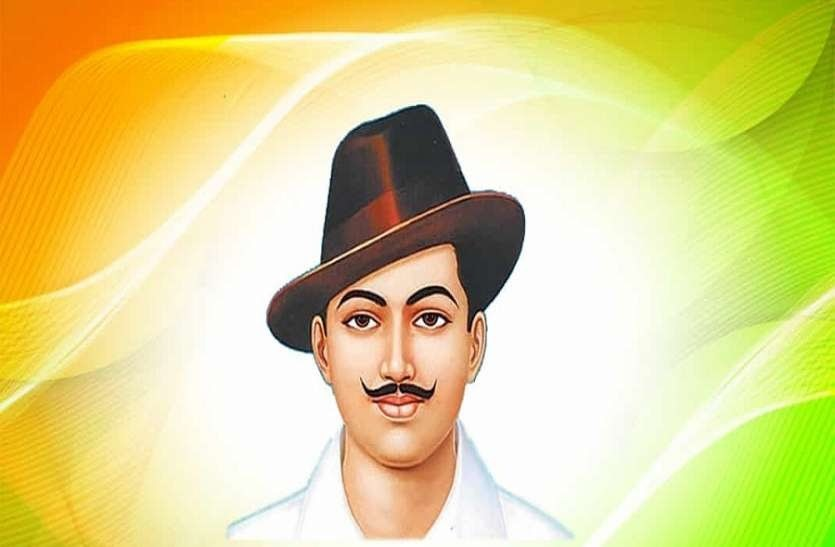
- Born as Bhaganwala on the 26th September, 1907, Bhagat Singh grew up in a petty-bourgeois family of Sandhu Jats settled in the Jullundur Doab district of the Punjab.
- He belonged to a generation that was to intervene between two decisive phases of the Indian national movement - the phase of the 'Extremism' of Lal-Bal-Pal and the Gandhian phase of nonviolent mass action.
- Born as Bhaganwala on the 26th September, 1907, Bhagat Singh grew up in a petty-bourgeois family of Sandhu Jats settled in the Jullundur Doab district of the Punjab.
- Role in Freedom Struggle:
- In 1923, Bhagat Singh joined the National College, Lahore which was founded and managed by Lala Lajpat Rai and Bhai Parmanand.
- The College was set up as an alternative to the institutions run by the Government, bringing to the field of education the idea of Swadeshi.
- In 1924 in Kanpur, he became a member of the Hindustan Republican Association, started by Sachindranath Sanyal a year earlier. The main organiser of the Association was Chandra Shekhar Azad and Bhagat Singh became very close to him.
- It was as a member of the HRA that Bhagat Singh began to take seriously the philosophy of the Bomb.
- Revolutionary Bhagwati Charan Vohra wrote the famous article philosophy of the Bomb. Including the philosophy of bomb he authored three important political documents; the other two were Manifesto of Naujawan Sabha and Manifesto of HSRA.
- Armed revolution was understood to be the only weapon with which to fight British imperialism.
- It was as a member of the HRA that Bhagat Singh began to take seriously the philosophy of the Bomb.
- In 1925, Bhagat Singh returned to Lahore and within the next year he and his colleagues started a militant youth organisation called the Naujawan Bharat Sabha.
- In April 1926, Bhagat Singh established contact with Sohan Singh Josh and through him the 'Workers and Peasants Party' which brought out the monthly magazine Kirti in Punjabi.
- For the next year Bhagat Singh worked with Josh and joined the editorial board of Kirti.
- In 1927, he was first arrested on charges of association with the Kakori Case, accused for an article written under the pseudonym Vidrohi (Rebel). He was also accused of being responsible for a bomb explosion at Lahore during the Dussehra fair.
- In 1928, Bhagat Singh changed the name of Hindustan Republican Association to Hindustan Socialist Republican Association (HSRA). In 1930, when Azad was shot, the HSRA collapsed.
- Naujawan Bharat Sabha replaced HSRA in Punjab.
- His time in the prison was spent protesting, seeking better living conditions for inmates. During this time, he gained the sympathy of the public, especially when he joined fellow defendant Jatin Das in a hunger strike.
- The strike ended with Das’ death from starvation in September 1929. Two years later, Singh was convicted and hanged at the age of 23.
- In 1923, Bhagat Singh joined the National College, Lahore which was founded and managed by Lala Lajpat Rai and Bhai Parmanand.
Important Facts For Prelims
Women Transforming India Awards
Why in News?
NITI Aayog’s Women Entrepreneurship Platform (WEP) organized the fifth edition of the Women Transforming India Awards (WTI).
- The WTI Awards 2021 were conferred upon 75 women achievers to celebrate their contribution towards a ‘Sashakt Aur Samarth Bharat’.
- The Women Entrepreneurship Platform (WEP) anthem titled 'Nari Shakti'-written, composed and sung by Kailash Kher was presented at the event.
What is the WTI Award?
- About:
- The WTI Awards is NITI Aayog’s annual initiative to highlight the commendable and ground-breaking endeavours of India’s women leaders and change-makers.
- Since 2018, the Awards have been hosted under the aegis of NITI Aayog’s Women Entrepreneurship Platform (WEP), with a special focus on entrepreneurship.
- Categories:
- Public and Community Service
- Manufacturing Sector
- Non-manufacturing sector
- Financial Products enabling Economic Growth
- Climate Action
- Promote Art, Culture and Handicrafts
- Digital Innovation
- Selection of Winners:
- The awardees have been selected on the basis of nominations received on WEP (Women Entrepreneurship Platform) and through shortlisting by a search-and-select committee.
What is WEP?
- WEP is an initiative by the NITI Aayog to promote and support aspiring as well as established women entrepreneurs in India, assisting them in their journey from starting up to scaling up and expanding their ventures.
- The idea of the Platform was first proposed by Amitabh Kant, CEO, NITI Aayog who announced the WEP at the conclusion of the 8th Global Entrepreneurship Summit (GES) in 2017, to help resolve the information asymmetry that exists in the ecosystem.
- The platform works to strengthen industry linkages and increase awareness of the women entrepreneurs regarding the existing programmes and services.
- Through its partnerships, services are provided in 6 main focus areas: Community and Networking, Funding and Financial Assistance, Incubation and Acceleration, Compliance and Tax Assistance, Entrepreneur Skilling and Mentorship and Marketing Assistance.
- Over 900 women entrepreneurs have benefitted through 77 programmes and events hosted on the platform.
Important Facts For Prelims
DUSTLIK Exercise
Why in News?
The 3rd edition of joint training exercise between Indian and Uzbekistan armies, EX-DUSTLIK is being conducted at Yangiarik, Uzbekistan from 22nd to 31st March 2022.
What is the DUSTLIK Exercise?
- About:
- The exercise would focus on Counter Terrorism operations in semi-urban terrain under a United Nations Mandate.
- The Grenadiers battalion is nominated for the exercise. The battalion is one of the highly decorated battalions of the Indian Army.
- The training schedule will focus primarily on sharing tactical level drills and learning of best practices from each other.
- It aims at enhancing understanding, cooperation and interoperability between two armies.
- The last edition of DUSTLIK was conducted in Ranikhet (Uttarakhand) in March 2021.
- The exercise would focus on Counter Terrorism operations in semi-urban terrain under a United Nations Mandate.
- Significance:
- Uzbekistan is important to India for security and connectivity to the Central Asian Region and also Iran, it is also one alternative India has with respect to Afghanistan.
- Security concerns stemming from the conflict in Afghanistan is one of the major challenges for India’s involvement in Central Asia.
- Uzbekistan is important to India for security and connectivity to the Central Asian Region and also Iran, it is also one alternative India has with respect to Afghanistan.

